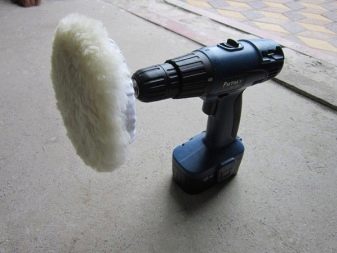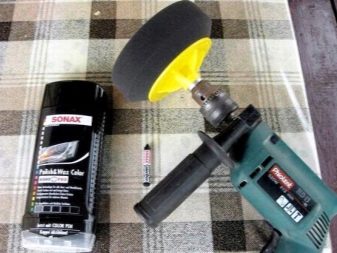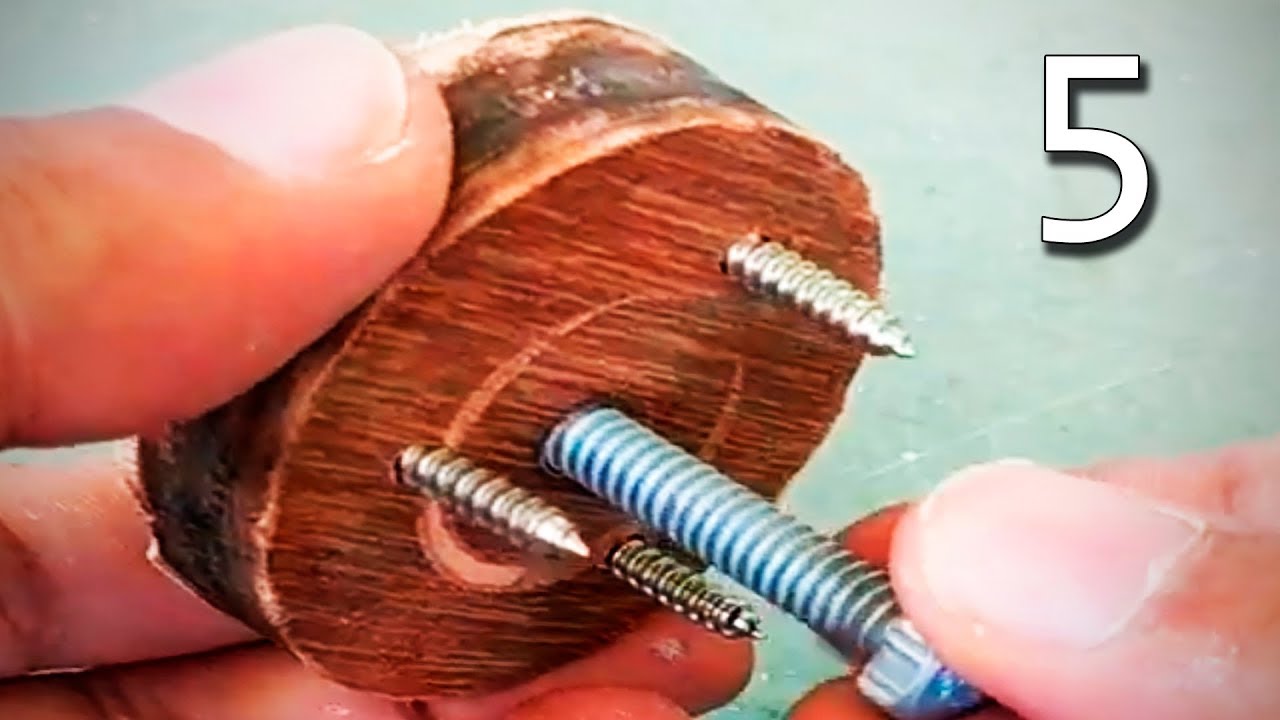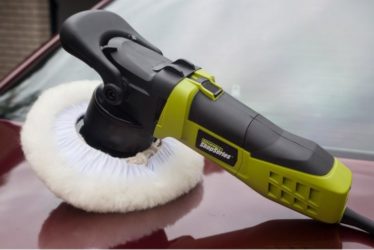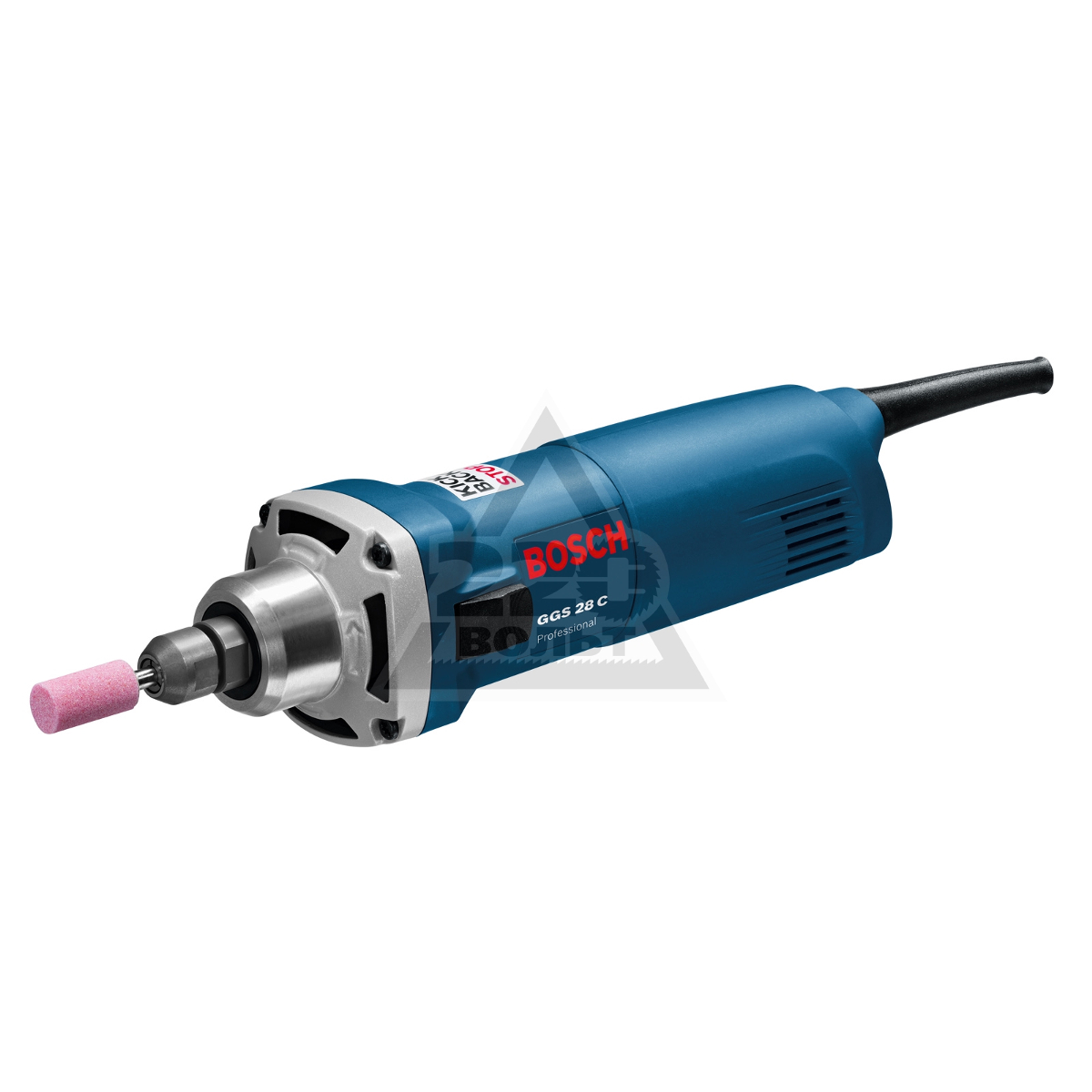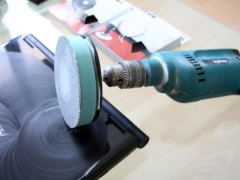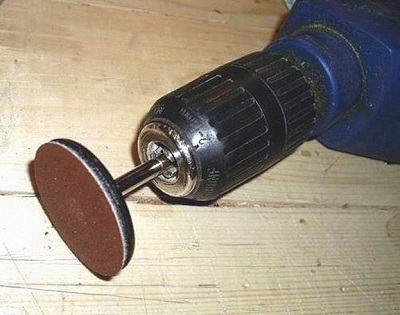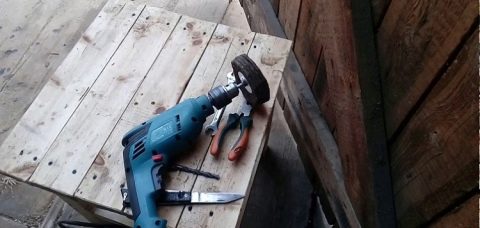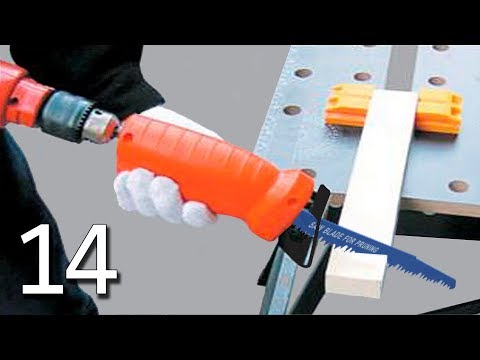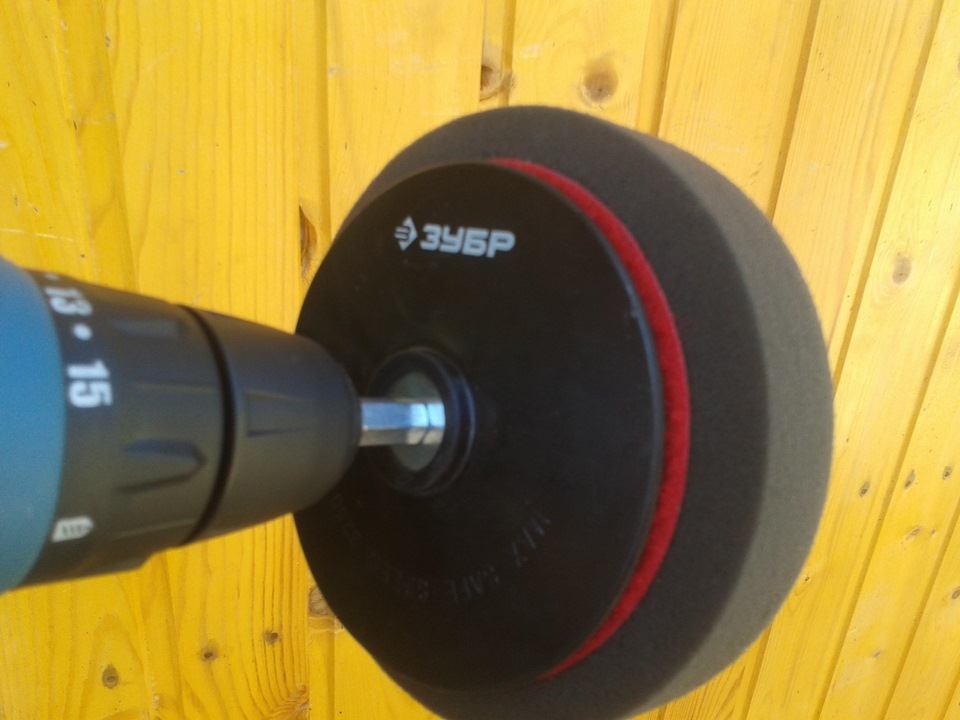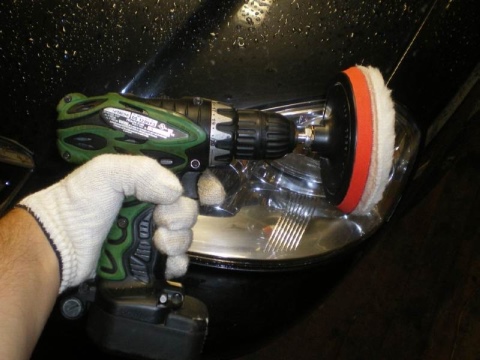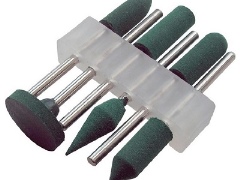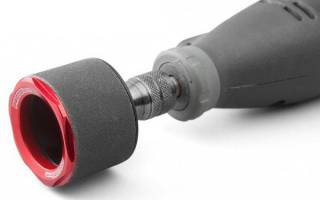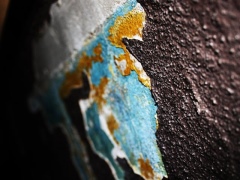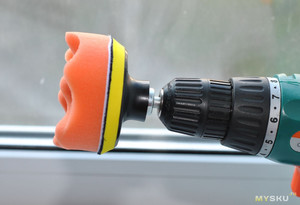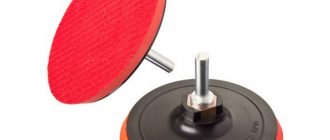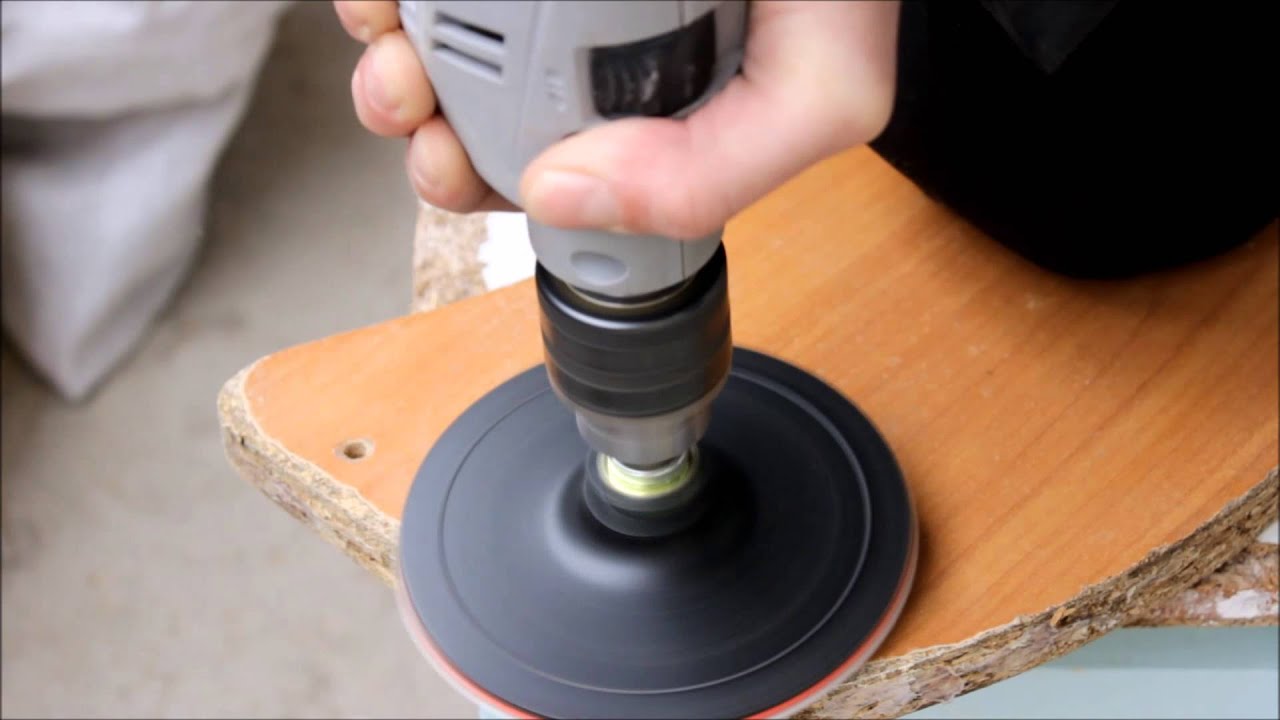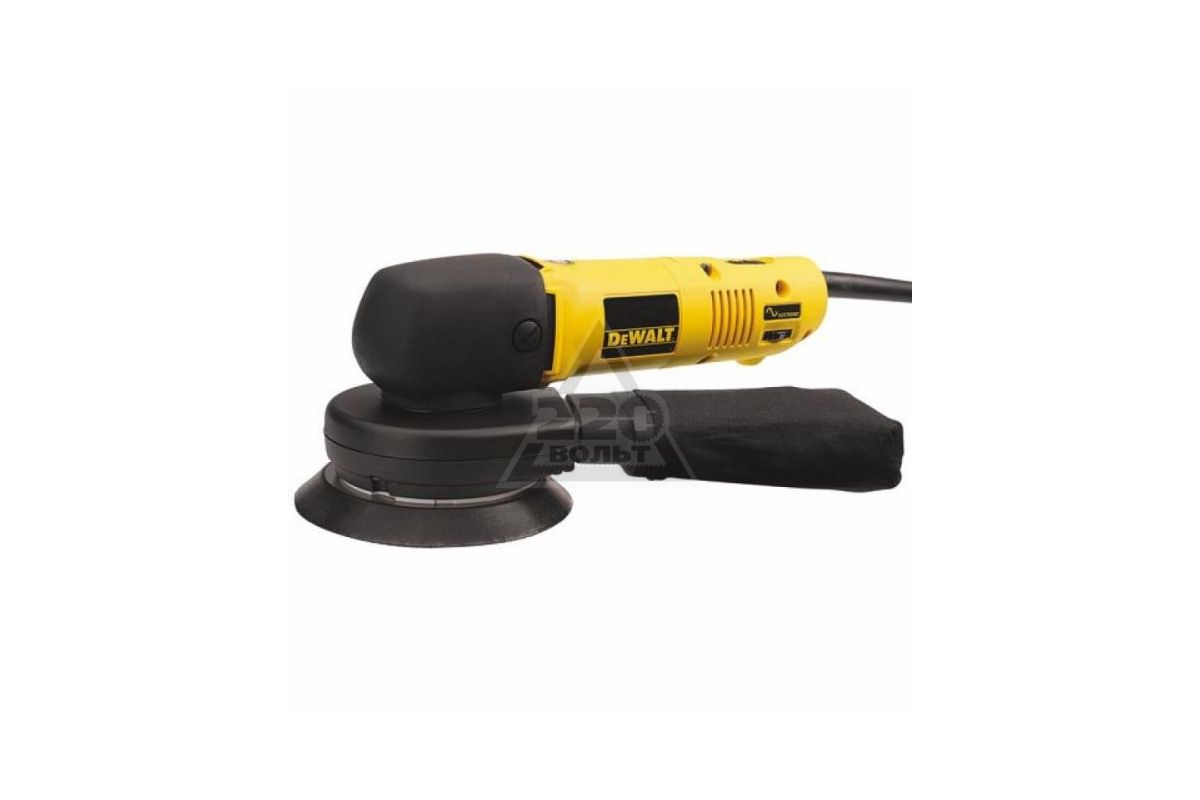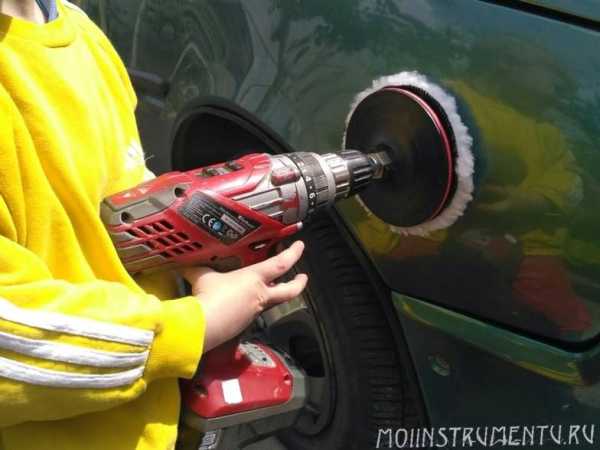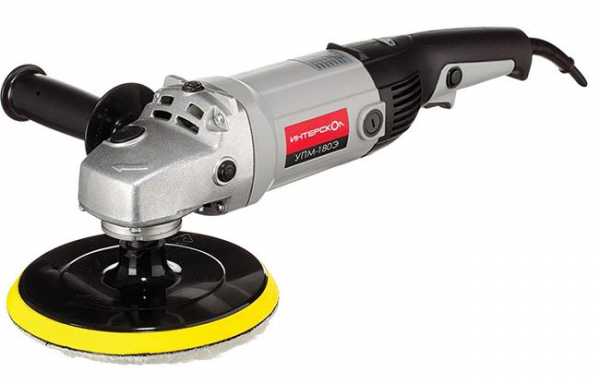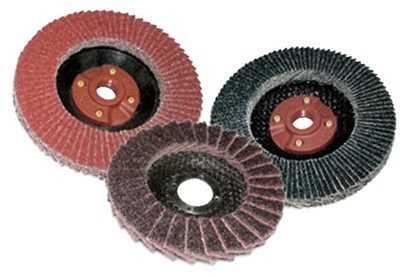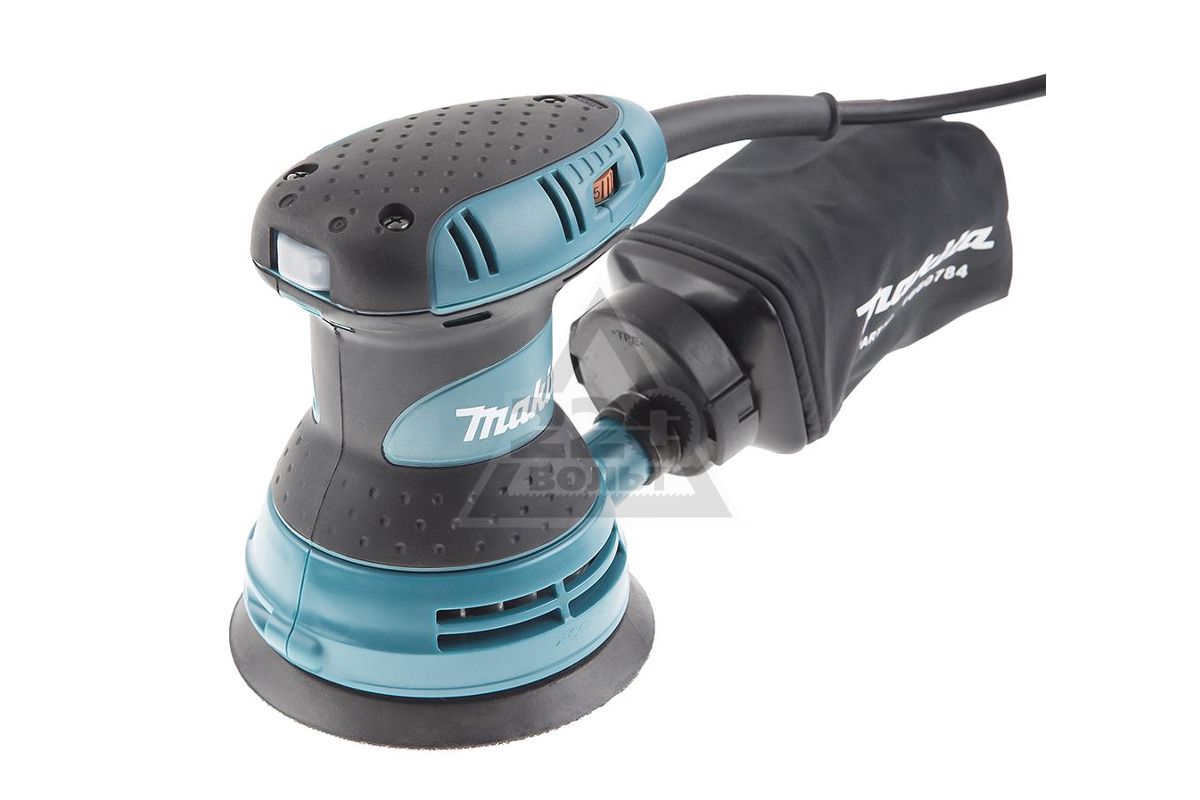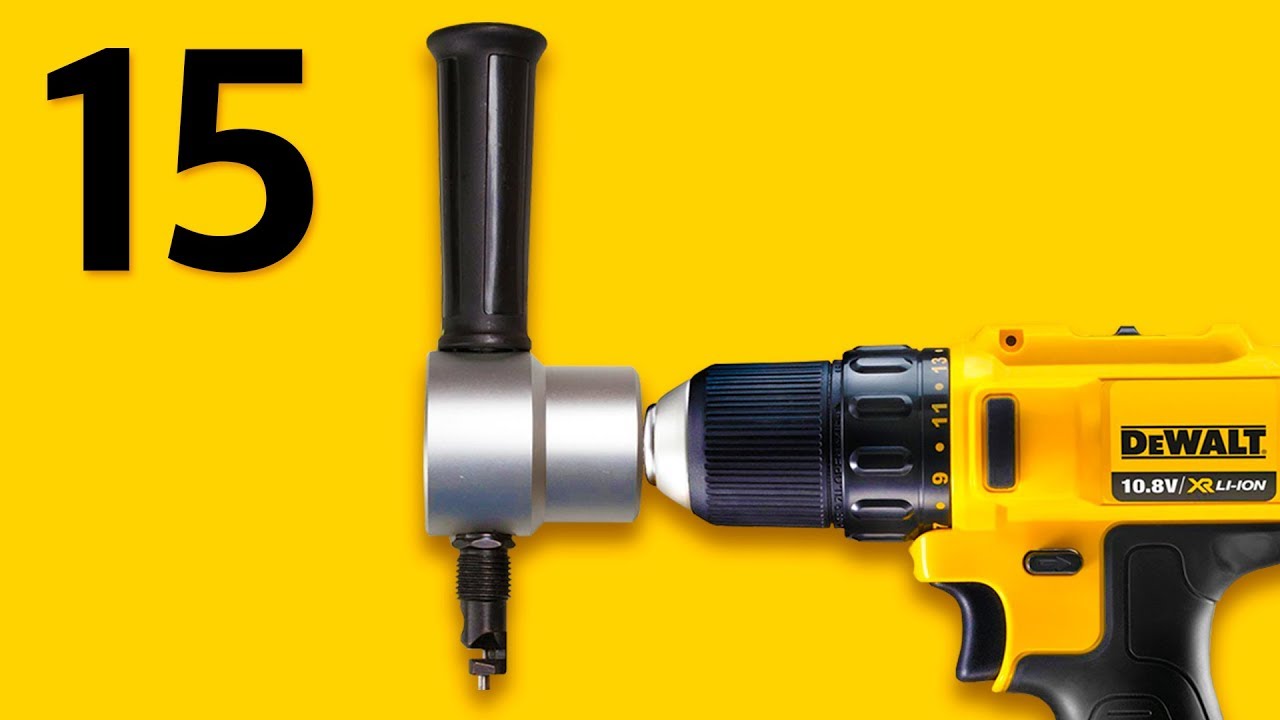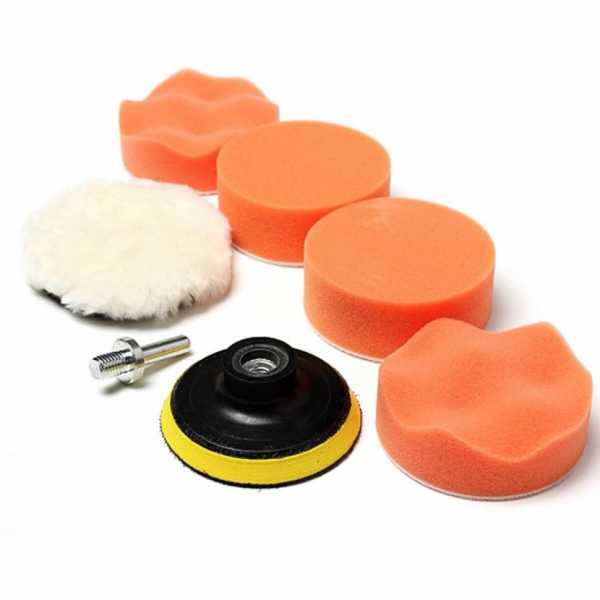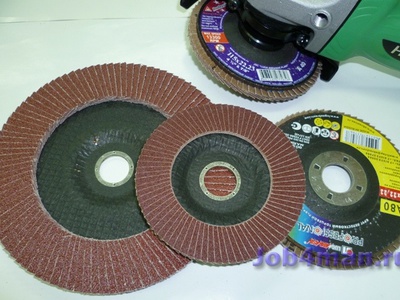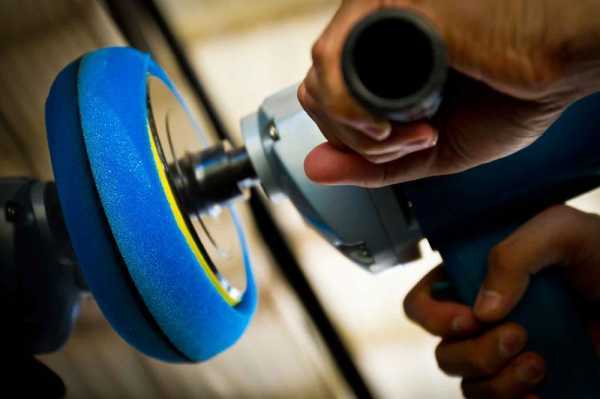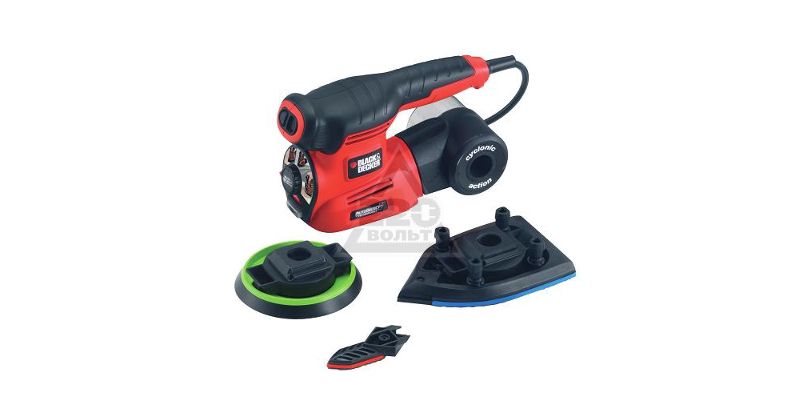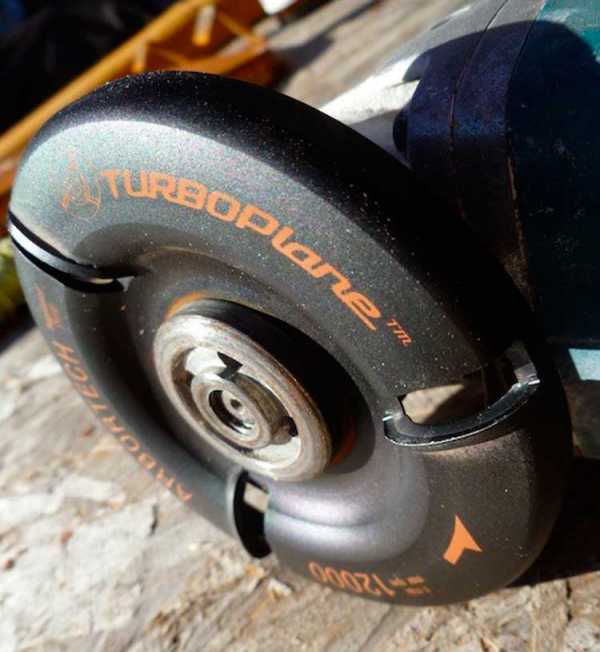Types of attachments
There are several types of drill bits, each of which is used for well-defined work. The sizes, shapes and characteristics of these components vary. Let's take for consideration the main types of grinding attachments.
Disk
Figure 4. Disk
A very popular type, which is a construction of a certain amount of grinding material located in a circle. The material used is different. Thick steel wire is used to handle hard metal surfaces. Final grinding with a drill and polishing is done with polymers.
Disc bits are able to work not only with the surface, but also with the edge, which allows you to polish narrow grooves. They are widely used for processing complex parts. By their design, such nozzles are a bit like cup nozzles. But the difference is that all the bristles are based on a circular disc in the middle.
The use of such tools requires certain skills from the master, so it is better to practice properly before doing responsible work.
Cup
Figure 5. Cup
Drill attachment for grinding, consisting of a cup-like base and many fibers of grinding material. Used to remove paint or varnish from the surface of a part. For wood, it is also used as a skin. There are many different types of cup attachments to suit different jobs. You can find a component for any task.
After using such a skin, it is recommended to process it with plate nozzles. This will help highlight the structure of the wood, which can be easily varnished.
Petal
Figure 6. Petal
A separate view, which is a set of strips of material fixed on the axis of rotation. Sometimes such models are called fan-shaped. Each petal is made from an abrasive material that helps to have the desired effect on the workpiece.
Very often, ordinary sandpaper is used as a material. This helps to reduce the cost of the product and make it as efficient as possible. Suitable for processing wood products of various shapes.
Drum
Figure 7. Drum drums
Sections of sanding paper are attached to a sturdy cylinder. This cylinder can be made of rubber or other material. To prevent the paper from sliding off the drum, special holding mechanisms are used.
In order for the paper to fit snugly against the drum, it is artificially deformed, forcing it to increase in size. The paper is stretched and secured to the attachment. Such models are used for processing parts made of wood, glass or metal. Allows you to polish the surface to a mirror finish. It is convenient to use for cleaning holes in parts.
Plate
The model is composed of two components: a circular plastic disc and a sheet of abrasive material. This sheet is attached with sticky material
An important feature of such a nozzle is the presence of a damper, which will smooth out irregularities in the material and will evenly clean the surface of the part. If this damper was not there, processing would be greatly complicated. It is difficult to accurately guess the force with which you need to clean the surface
There are high risks of damage to the integrity of the part and damage. Especially, this applies to work on weight.
Any elastic material is inserted as a damper. Simple foam rubber seems to be cheap and convenient.
Working with devices requires a high level of training of the wizard. It can be difficult for a beginner to maintain a right angle on a part. Sometimes you can find models with a special mechanism that allows you to adjust the angle of inclination. It is used for both roughing and finishing. Everything will depend on the type of abrasive used.
Soft
These components are typically used for sensitive surfaces that are easily scratched. Also used for polishing mirror surfaces or varnishes. They are usually made of felt, polymers, foam rubber or some kind of woven materials. There are different shapes. It all depends on the workpiece and its features.
Abrasive
End caps that can be used for boring holes or shaping a part. They have a fairly high rigidity, allowing you to remove whole layers of excess material. All parts are processed perpendicularly, observing a right angle. This can be difficult for inexperienced craftsmen.
Heads come in many different shapes: ball, cone, cylinder, and more. Stones can be used to make these heads. The model is widely used for sharpening tools.
Varieties
Grinding is the basic purpose of angle grinders. In the case of working with wood, this is a complex process that requires care and skill from the master. Natural wood of different structure is brought to a perfect look with high-quality and reliable discs. Conventional diamond cutters will not work here. There are special grinding wheels for the woodworking industry.
There are several types of angle grinder grinding wheels. First of all, the initial cleaning of the surfaces is carried out. This job is done by several discs that differ in shape and size.
- Roughing. They are designed to remove old paint and varnish from wood. Usually, residues of the previous coating that cannot be cleaned manually are removed from windows, sills and floor surfaces. A steel wire bristle is attached to the disc for rough processing. The elastic pile is placed either along the entire perimeter of the circle, that is, along, or at an angle segmentally as in a conventional brush. It depends on the purpose of the nozzle.
- Cord brushes with wire or spikes. They allow you to level and smooth the surface of any material. With a wire brush, it is easy to remove a layer of varnish or old paint, rust from the metal. If the boards on the floor are of different heights, they can be compared with each other with a spike circle. They differ in shape and speed of rotation.
- End pieces. They work in layers, like files, with sides and edges, corners and oblique cuts. The attachments are designed for sanding edges or smoothing bevels.
When roughing with a sander, the wood layer remains intact, only the decorative coating is removed. This property of the grinder is indispensable for the restoration of products. After removing the previous color scheme, you can apply another to the fresh and smooth panel. At the same time, the furniture will change its appearance and will look new. Brushing or artificial aging of the material is performed with a brush. To do this, the soft fibers are removed, and rings and texture appear on the natural wood. The stain emphasizes the relief transitions.
The next stage of processing gives the surface smoothness. Here, experts advise using polishing wheels. They are spongy, made of felt and coarse fabric, with replaceable sandpaper. The fabric and felt are secured for work with Velcro. Attachments are sold in sets of five for easy changing. Sandpaper is selected with a medium or fine grain. The brand is usually indicated on the packaging.
The design of the nozzle is also important. Finishing or finishing circles are divided into flap, solid and mobile.The use of a petal wheel allows you to achieve an absolutely smooth surface. Several layers of emery, overlapping like fish scales, are placed on the disc as an abrasive. This arrangement of the abrasive material reduces wear. Such a modern nozzle as a cup circle brings the product to an ideal state. The bowl does little texturing, easily penetrates the joints. A pile made of synthetic material or corrugated wire is attached to it.
A nylon wood brush is made up of a large number of fine fibers. It is used for finishing polishing. The bowl-shaped attachment allows the technician to sand the most difficult-to-reach areas on the part. The brush removes burrs and small dirt, sands the varnish. End brushes are made of polymer abrasive, cylindrical ones are made of brass and steel wire.
Why do you need a flexible shaft
The flex drive consists of components such as an armored cable and a soft body. One side of such a device is equipped with a tip for fixing in the tool holder, and the second has a similar (or collet) chuck to install the corresponding work items: drills, cutters and others. Such equipment is used in such exceptional cases when it is impossible or inconvenient to work with a stationary drill.
On an ongoing basis, a flexible shaft is used in medicine, in particular in dentistry, since almost all drills function through such a device. In construction, such a device is used extremely rarely, but if it becomes necessary to drill a hole or grind a surface in a hard-to-reach place, then only a flexible shaft on a drill will help to solve the problem.
The flexible shaft can be used not only to connect to a drill, but also to a screwdriver or mini drill. Thanks to such a shaft, the working nozzle is removed from the body of the main tool, which allows various types of delicate work that requires little effort. With the help of this equipment you can drill holes from 1 mm, and also carry out cleaning, grinding, screwing and unscrewing screws and other fasteners.
Design features
A flexible shaft for a drill is capable of bending in any direction, which, in fact, is its main advantage. This shaft capability was achieved through the use of the following parts:
- A steel cable acting as a rotating core.
- A wire in the form of a spiral located outside the device.
The shaft is covered from the outside with a special shell, due to which the lubricant leakage is prevented. This lubricant helps to reduce friction and also protects the core from mechanical stress (abrasion), damage and moisture ingress.
The flexible shaft design provides for the use of bearings to which the cable is attached. It is thanks to the bearings that the rotation of the cable is ensured, which is attached to the shank on the one hand, and to the chuck on the other. A high-quality drill attachment costs about 2,000 rubles. There are cheaper models, but it all depends on the manufacturer and the quality of the product.
How to do it yourself
To equip the electric drill with a structure in the form of a flexible shaft, you do not need to purchase it, especially if you do not plan to use the device for prolonged work. You can make a device yourself from improvised means, while saving not only money, but also time for searching.
To make a flexible shaft for a drill or screwdriver, you should use any braided wire available in the arsenal. If it is not available, then it can be purchased. At the same time, the length of such a wire can be chosen absolutely any, depending on the technological tasks.
Alternatively, you can use a speedometer cable from a car or a throttle or clutch cable from a motorcycle to make a flexible shaft.After the finished braided wire is available, you will need to connect one end of it to the shank. As such, you can use a shank from a damaged drill. To connect the steel cable to the shank, you need a steel nut and a welding machine. The other end of the steel cable must be connected to any existing drill chuck
At the same time, it is important to understand that when performing work with such a device, you should hold your hand not to the cartridge, but to the braid or the outer layer of the wire
A self-made shaft design will not only save money, but also get a product of the required length. Standard products produced by production have a length of no more than 50 cm. Sometimes this is not enough, so you have to resort to making your own equipment for a drill.
In conclusion, it should be noted that the drill, due to its improvement, is becoming an increasingly versatile type of tool. The flexible shaft is a very convenient and effective drill attachment that can be used to solve any difficult task.
3 Adapters - Turning Drill And Grinder Into Grinding Tool
A drill and grinder are usually not used for polishing, but a simple adapter turns them into a sanding tool. A support plate or drum is used as it. The plate is executed as a plastic or rubber disc with a Velcro, on which a round-shaped sandpaper is attached.
There is a layer between the base and the Velcro, which contributes to the better contact of the circle with the surface to be treated. The plates are attached to the drill using a shank, and to the grinder - through a threaded hole by screwing onto the output shaft. If you screw the shank into the angle grinder bit, it can be used with a drill.
But it is not recommended to use a plate for a grinder converted in this way with a drill on the body of a car. It is too stiff, the tool must be held strictly vertically, which is very difficult. The slightest deviation from the vertical position leads to gnawing into the metal, the appearance of depressions. Therefore, for a drill, only attachments are used that can compensate for inclinations:
- rubber;
- plastic with a thick soft layer;
- with movable pin attachment.
On sale there are accessories for a drill with a shank that can be mounted in two positions. He is rigidly blocked or given a certain freedom. With a free arrangement, an adaptation to the position of the drill occurs, the processing comes out clean, without the risk of unwanted grooves. But such a device is quite expensive.
To use a drill and grinder as a polishing tool, you will need:
- nozzles for mounting circles;
- adapter for adapting a disc or nozzle with a circle;
- polishing wheel.
Making nozzles yourself
At home, it is possible to make your own grinding wheel out of felt or felt. Old felt boots or felt fabric are suitable for the material. The packing requires about 50-250 mm of material.
Sequencing:
It is important to carefully glue the blanks for the circle. They must be glued with glue, not reaching the edges, otherwise the dried glue will damage the surfaces during polishing.
Connect the greased parts of the future nozzle and press firmly until the glue is completely dry.
In the center of the workpiece, make a hole of the required diameter for attaching to the power tool.
Fix a small rod in the hole so that it is easy to put on and remove from the drill .. After polishing, it is advisable to stick a protective film in a car service, so there will be practically no scratches and chips on the body
After polishing, it is advisable to stick a protective film in a car service, so there will be practically no scratches and chips on the body.
Polishing convex and concave panels
When polishing the convex part of the panel with a small convex radius, it will not be possible to cover the entire part in a circle at once in one pass, even if the size of the circle allows. Some part will not be in close contact with the wheel and will not polish properly. Make horizontal passes along each "face" that polishthe circle touches completely, then polish with vertical passes, following the bend, as if hugging the convex surface around the circle.
When polishing the concave portion of the panel, the size of the circle may not allow the inner most concave area to be polished normally. Polish separately the areas up to the most concave part and after, where the circle is in full contact. The most concave part can be polished by tilting the circle to the desired angle, or using a special small circle with a machine or drill.
When working with bumpers, it may also be necessary to use a small buffing wheel. It is better to skip various ribs and hard-to-reach places and then polish by hand, since there is a high probability of rubbing the paint in these places.
Varieties of grinding devices
The grinding attachment for a drill is made according to the same principle as replaceable blocks for polishing machines. The only difference is in the installation - the drill is connected with additional equipment using a pin for fastening, and thread is used in specialized machines.
Their shapes and designs are varied and adapted to different types of work. On this basis, they can be classified into several groups.
Sanding wood with a drill bit
Plate
Round nozzle with a flat base on which sandpaper is glued. The main difficulty in working with this tool is the need to hold the drill at a right angle to the surface, which is not always possible. Because of this, defects appear on the tree. To reduce the risk of product damage, it is better to choose rubber caps rather than plastic ones. Also, when buying, you need to make sure that there is a soft layer between the base and the sanding coating.
Such a nozzle for sanding wood is used during the preliminary or finishing process - it depends on its hardness and graininess. For ease of use, variations are made with the ability to adjust the angle of inclination.
Cup
This bowl-shaped variety helps to get rid of old paint from the surface, sanding the wood and highlighting its texture. For each type of work, you can find a special brush. Metallic wood during processing releases its fibers.
Therefore, after using it, the surface should be sanded with a plate nozzle, then a layer of paint or varnish can be applied. A natural wood pattern will stand out on the product. The soft-filled cup attachment is convenient for cleaning and fine polishing.
Disk
Their device resembles a cup nozzle. But they have one feature - the bristles are directed from the center of the disc to its edges. Interaction with the surface occurs in the end way. They also resemble the fan-shaped variety, when the blades are installed parallel to the base.
Their main purpose is the treatment of hard-to-reach places, the removal of old finishes. To use them, you need some experience and skill, so it is better to practice on an unnecessary product.
Drum
Such grinding attachments for a drill are made in the form of cylinders, on the side surface of which sanding paper is glued. They are used for stripping wood, metal or glass. Most often they are used for sanding holes inside and for the end parts of the product.
Fan-shaped
They can also be called petal.This attachment is a grinding disc on which a plurality of blades are installed over the entire plane. They are sandpaper petals, and other abrasive material can be used.
There is another variety, which is made in the form of a cylinder, and the petals are fixed along the entire side surface of the drum. Such drill bits are convenient for processing complex-shaped wooden parts.
Soft
They are used wherever gentle polishing is required. Such attachments are made of foam rubber, leather, felt or twisted rope. Suitable for the treatment of lacquered or painted products, as well as for removing dirt on surfaces that are sensitive to abrasion.
Face grinding wheel
This is a grinding stone made in the form of a ball, cylinder or cone. There are variations in soft material. It is most advisable to use it on small parts, in hard-to-reach places.
The abrasive drill bit is used for metal and glass products. The principle of operation is like a file, only due to the speed, productivity increases.
Soft polishing discs are needed for finishing the product.
Main types
Abrasive
Such discs are suitable for rough processing of stainless steel and various types of metals, stone and concrete, wood and plastic. Used before finishing polishing.
The composition of microcrystals in abrasive wheels:
- Garnet. It is an elastic and flexible material that is suitable for treating wooden surfaces. Removes wood chips and shavings;
- silicon carbide. Hard abrasive for rough polishing of wood, stone and metal surfaces. Resistant to temperature extremes and moisture ingress;
- ceramics. This coating will cope with any scratches. Resistant to heat and will last a long time;
- aluminium oxide. Allows for soft polishing without scratches, streaks and stains.
Self-engaging
Suitable for both manual grinding and on machine tools or grinders. They are used for polishing furniture, metal structures and cars. Attached with Velcro to the support plate.
Abrasive polishing wheel for auto
Volcanic
Their base is vulcanized rubber with additives and microcrystals. It is used for grinding metal surfaces, as it has a high heat capacity.
Felt
These are car polishing discs made of fine fabric that get rid of scratches, cracks and chips. Any surface can be processed. Before polishing, the fabric is wetted with an emulsion called polish.
Foam
These discs are made of polyurethane foam.
They have different colors and composition:
- black - with a porous structure;
- blue - medium soft;
- orange - medium hard;
- the white ones are made of hard foam rubber.
Foam discs come in different shapes:
- embossed - cool the surface well when polishing with a grinder;
- smooth - removes scratches and scratches from varnished or painted surfaces.
Vulcanite wheels for car polishing
Felted
These circles are made from dense pressed wool. Suitable for grinding with a grinder or machine. Eliminate defects from metal and stone surfaces. Store discs made of this material in a clean and dry place. A pumice stone is used to clean the dirt from the felt wheel.
Which tool should you choose?
In the case of systematic use of a drill for polishing a car, the tool can quickly fail. This is due to the fact that the drill is designed for a straight-line load. That is, when processing various materials, the screwdriver is placed on its side. As a result, the bushings in the drill fail. Therefore, using a drill for polishing various materials is undesirable, but possible.
A grinder for polishing work is better suited than a screwdriver, but do not forget that an angle grinder has an order of magnitude more revolutions than a polishing one.
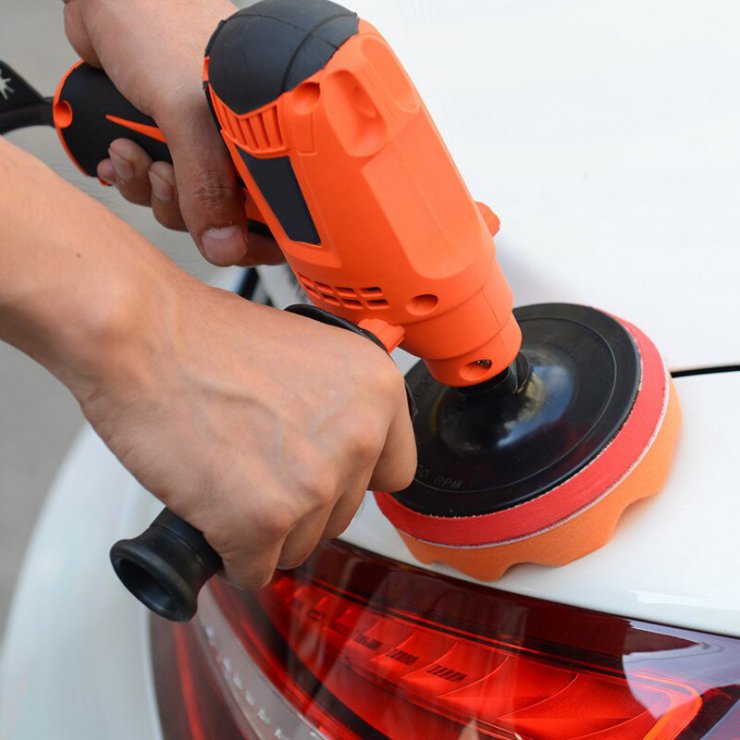 A polishing machine is the best option. In such a tool, a speed regulator is already provided at the factory. And also at the lowest speed, the polishing machine exerts less specific pressure on the work surface than a grinder or drill.
A polishing machine is the best option. In such a tool, a speed regulator is already provided at the factory. And also at the lowest speed, the polishing machine exerts less specific pressure on the work surface than a grinder or drill.
Completion
Now it becomes clear how the polishing technique affects the process and how you can minimize problems and improve efficiency and results by varying the technique depending on the situation. The severity of the defects, the hardness of the paint, even the climate can influence the technique used. Given the huge variability in paint systems, if you apply the same polishing technique on all machines, you will periodically miss defects. A good child will use a variety of techniques, depending on the initial conditions. It is necessary to study the LCP and, based on this, act in a certain way.
Abrasive techniques
Three polishing techniques are used to vary the abrasive force (cutting ability of the abrasive paste). It's speed variation rotation polishing wheel, pressure on the wheel, speed of movement of the machine. Let's take a closer look at how these techniques can be applied.
Polishing wheel speed
The spindle of a rotary polisher only rotates on one axis, like a drill. Typically 600 to 3000 rpm. The rpm range from 600 to 1500 can be used to polish almost any machine. Work at lower rpms and increase them gradually.
When using wool wheels, the strongest impact occurs at 2000-2500 RPM. After that, you can complete the work at 1100-1300 rpm with foam rubber circles. It is possible to polish less aggressively with woolen wheels at rpm 1600-1800.
The required rotation speed depends on many variables such as the hardness of the paint, the technique used, the hardness of the wheel. If the paint is hard, then the rotation can be quite fast, while with a soft paintwork with the same settings, the paint can overheat.
- The speed of rotation of the wheel affects the cutting ability of the paste. The faster, the more abrasive effect, the slower, the softer the paste.
- The slower the rotation, the less defects are eliminated, but the easier it is to control the machine. Low speed heats up the paint less.
- The faster the rotation, the better the defects are eliminated, but the more the paint heats up. More small circular scratches are also formed.
- It is not recommended to exceed 1800-2000 rpm.
Circle pressure
- The abrasive effect can be varied by increasing the pressure of the polishing wheel on the surface of the paintwork. However, too much pressure will prevent the abrasive paste from working properly. The pressure on the circle should not be strong. Most often, the weight of the polisher itself is sufficient.
- It is sometimes necessary to press on the wheel during polishing in order to enhance the effect in certain places where the scratch or dullness cannot be removed with the usual action of the wheel. As mentioned earlier, you can tilt the circle slightly to one side to concentrate the action in one place. The rest of the time, the pressure on the circle should be minimal.
- To reduce the abrasive effect, you can slightly raise the machine. This reduces the pressure of the polishing wheel on the paintwork.
Vehicle speed
The rotary machine must be constantly moved during polishing so that the heat does not concentrate in one place. The paint can overheat in seconds and rub off the varnish. Polish with slow, even strokes.
The direction of movement of the wheel when polishing. Each pass should overlap the previous one by 50%.
The slower the movement of the machine on the surface, the more defects are eliminated. Rotating the wheel too quickly and moving the machine slowly increases the risk of paint overheating and damage.
- With a fast movement of the machine, fewer defects are removed. If you move the machine too quickly, then the abrasive paste will not have time to affect the paintwork. Scratches and dullness will remain.
- Rapid movements of the clipper often involve tilting the wheel and polishing with an edge, which leads to the appearance of holograms, but it seems that the polisher is working quickly and efficiently.
- You need to learn to feel the necessary speed of the machine when you start practicing.
How to use?
The grinder has a simple technical device. It is equipped with an electric motor connected to a bevel gear. It provides rotation of the shaft at a high speed of up to 1000 rpm (when working with wood, this speed is optimal). Powerful models require a three-phase power source; for domestic use, a standard power source with a voltage of 220 V is suitable. You have to work with the tool with a single point of support, holding the grinder on the weight. A skew can lead to a jerk, for this novice master needs to acquire serious skills to work.
Correctly working with the machine will allow compliance with safety measures, namely:
carelessness in this matter is unacceptable;
in order to exclude injuries when using angle grinders, the protective casing is not removed from the disk;
do not work with wood using a strong feed;
before starting operations, be sure to wear glasses and thick gloves; arms are protected with long sleeves, clothes should not be light, as sparks can fall on the body;
it is important to take breaks during work so that your hands do not get tired and the machine does not slip.
It is convenient to work with a tool that has a support handle. The safest are those grinders that are equipped with a chain from a chainsaw. If the clipper unexpectedly jams, the disc continues to rotate, which minimizes the risk of injury
It is also important to move the machine smoothly over the floor surface, free of vibration. Before starting work, you should once again make sure that the wheel is securely and accurately fixed on the axis.
It is better to start mastering the tool with cutters with small teeth. The smaller the teeth, the easier and safer the operations. In the process of work, any disc wears out, the diameter of the circle changes, a replacement is needed. Discs are changed when switching from one type of processing to another during the grinding process.
It is worth adhering to the following step-by-step instructions:
- disconnect the tool from the mains, stop the rotation of the shaft by pressing the blocking button, only after that it is allowed to unscrew the disc and remove it;
- unscrew the retaining nut - the stopper is removed with a wrench, if the nut is tightened too tightly on the disk, you will need a gas wrench, which is heated and cooled before use, and the rest of the disk is cut out with a hacksaw;
- remove the unusable disk;
- put on a new one and secure it with a lock nut, firmly fix the thread on a precisely installed disc, then you can continue to work.
See the next video for more details.
Electric drill. Views
If you remember the old tool, then the cartridge in it was changed only with the help of a key.
There are several main options for such a tool:
- Drums. Impact process of mechanical properties. Designed to work with materials with good strength properties.
- Unstressed. Used for drilling holes in less durable substrates.
- Corner. For use in confined spaces.
- Mixers. Equipped with additional handles, which gives additional convenience when mixing mortars.
- For diamond drilling.
When choosing a drill, you should pay attention to the main characteristics:
- Power. For household purposes, an indicator of 1500 W is suitable.
- Rotation speed (up to 3000 W typical of electric drills for household use).
- Drilling diameter. For home use, large parameters are not required.
The larger the range for each value, the more versatile the instrument becomes. Everyone chooses a drill based on their needs. Someone needs a professional one, someone needs a universal household one. But one thing is certain: when there is an opportunity to shift the mechanical process onto the "shoulders" of a power tool, no one will refuse to do it. And at the same time, you can also save a significant amount on the purchase of additional equipment.
Sequence of work
Advice:
- It is impossible to carry out work in direct sunlight, the paintwork is exposed to additional heat.
- First, the car is washed, wiped with a sponge, dirt is removed with simple household chemicals or car shampoo.
- Heavy tar or bitumen contamination is removed with clay; a suitable degreaser is selected.
- White spirit often corrodes varnish, so aggressive solvents are used to process pure iron.
- For plastic, industrial alcohol is suitable, fat is removed with dishwashing detergent diluted in water in a ratio of 1: 500.
- Wipe the clean coating dry with hard paper towels.
- Without sanding, polishing is performed if only the top layer is damaged, the scratches are shallow.
- GOI paste removes large cracks, rubbed in with a grinder, manual processing is not carried out.
- Sometimes sandpaper and abrasive pastes with different grain sizes are enough, but only polish and soft circles give the best effect.
- Polishing is performed quickly, large areas are divided into several parts, the composition is applied alternately.
- The instrument is set at 1200-1800 revolutions, a hard felt circle is put on.
- The paste is ground in detail, difficult places are handled.
- The remains of the paste are wiped off, the machine is washed without chemicals.
Actions when removing chips:
- The paint is removed from the damaged area.
- A polishing compound is applied.
The polishing materials are carefully selected, the abrasive gel removes the varnish and removes visible defects. There are many drugs on the market to brighten the color. Stains after rain, cloudiness are removed with a reducing polish, which contains a grinding additive. For vertical planes, thick mixtures are recommended; substances that improve brightness are added to them. Aerosols are effective, consumed economically, but there is little polish in the cans.
NS

